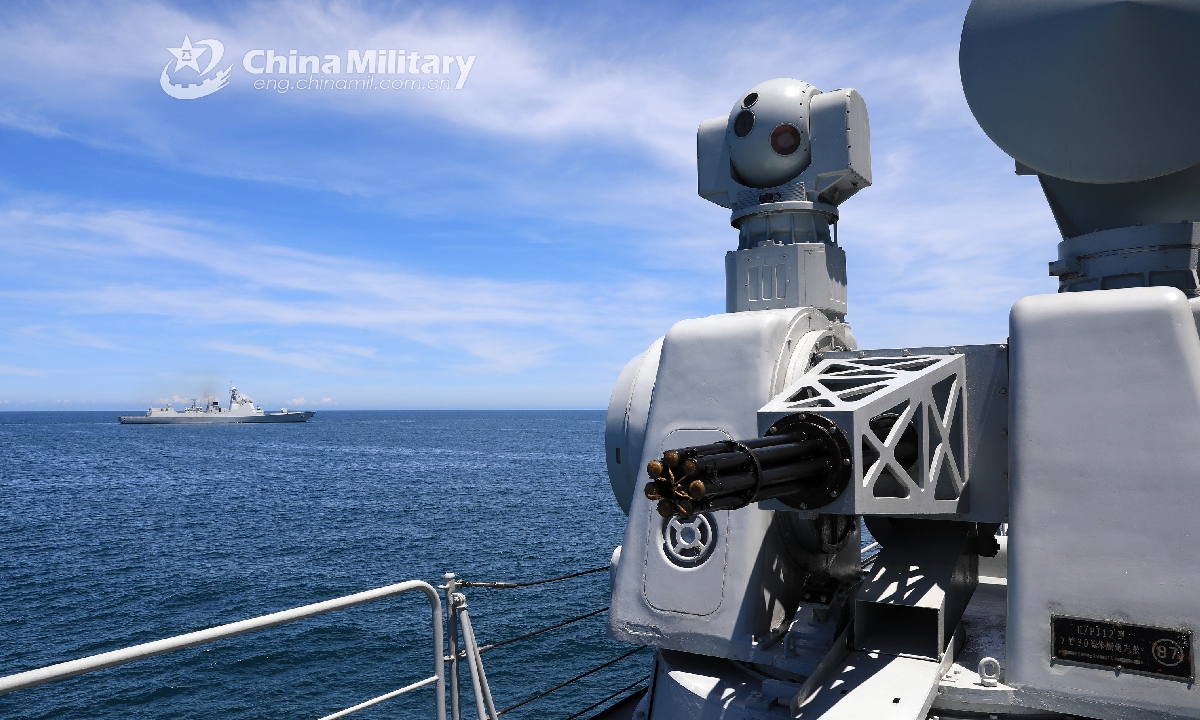Aggressive US moves in S.China Sea have consequences
Source: Global Times Published: 2020/7/8 21:58:40

The Type 054A guided-missile frigate Yulin (Hull 569) and the Type 052D guided-missile destroyer Hohhot (Hull 161) attached to a destroyer flotilla with the navy under the PLA Southern Theater Command steam in a stern formation during a maritime maneuver operation in waters of the South China Sea on June 18, 2020. (eng.chinnmil.com.cn/Photo by Li Hongming)
According to the South China Sea Strategic Situation Probing Initiative of the Peking University Institute of Ocean Research, five US military reconnaissance aircraft have flown close to South China's Guangdong Province for three consecutive days as of Wednesday. Also on Wednesday, a US Navy EP-3E came within 90 kilometers of Guangdong's offshore airspace.
First, by repeatedly sending aircraft to approach China's coast, the US aims to provoke China by showing its military muscle - to shock and awe perhaps?
Second, the US planes were also sent to try to monitor military radio communications. In this way, they can speculate whether the People's Liberation Army (PLA) is conducting military exercises. They seek to peep inside PLA deployments, especially the troops near the island of Taiwan and the South China Sea.
And last but not least, the US is also trying to demonstrate supports for Taiwan. We can see this in the reaction of some secessionist media outlets on the island.
The US regularly sends aircraft to approach China - and the PLA is well prepared for it. However, some Western media outlets - especially some on the island - have exaggerated the meaning of these flights. They are further encouraging the arrogance of some secessionists on the island. This being the case, the US' provocation seriously infringes on China's interests and national security. This poses a great threat to regional peace and stability.
In response to US military's provocations, the PLA can take various countermeasures - sending fighter jets to approach US aircraft and driving them out of China's airspace is just one of the countermeasures. The PLA can respond in kind to the US military with its own maneuvers.
For example, it can send warships and aircraft to carry out exercises around the waters where the US military conducts drills. It can also send reconnaissance aircraft to monitor the US' exercises. The US Navy will sponsor Rim of the Pacific exercises between August 17 and 31. That could be a choice for the PLA to cast an eye for an eye.
With a strong strategic mind and a cooperative notification mechanism, the US military, particularly the US Navy, is very capable of appropriately dealing with emergencies. Usually, it makes no reckless decisions. But given tense China-US ties, the US' continuous provocation still might trigger small conflicts accidentally - although the two countries' militaries have refrained from doing so.
The combination of repeated US military reconnaissance operations near Chinese airspace and dual-carrier drills in the South China Sea remind the Chinese people of past accidents. Namely when a US spy plane suddenly struck a PLA fighter jet and caused the disappearance of a Chinese pilot in 2001 near Hainan. Given current tensions between China and the US, the possibility of a similar case cannot be completely ruled out.
Although the two countries have developed a channel of communication between military commands to avoid misunderstandings, the US' increasingly aggressive moves could still result in consequences that are favorable to neither side. If the US crosses a line that it should not, the PLA reserves the right to a tougher response.
China's military strength is not what it was a long time ago. Today it is more robust. If the US military still treats the PLA in a disdainful way like in the old days (and thus leads the two sides to extreme situations), then the US military will have to swallow the bitter fruit of its own misjudgments.
Americans should not be too arrogant. With China's current military strength, should the incident of 2001 repeat and cause huge losses to the PLA, the US military had better be prepared to pay a more than double the price.
The article was compiled by Global Times reporter Xu Hailin based on an interview with Li Jie, a Beijing-based naval expert. xuhailin@globaltimes.com.cn
Posted in: VIEWPOINT